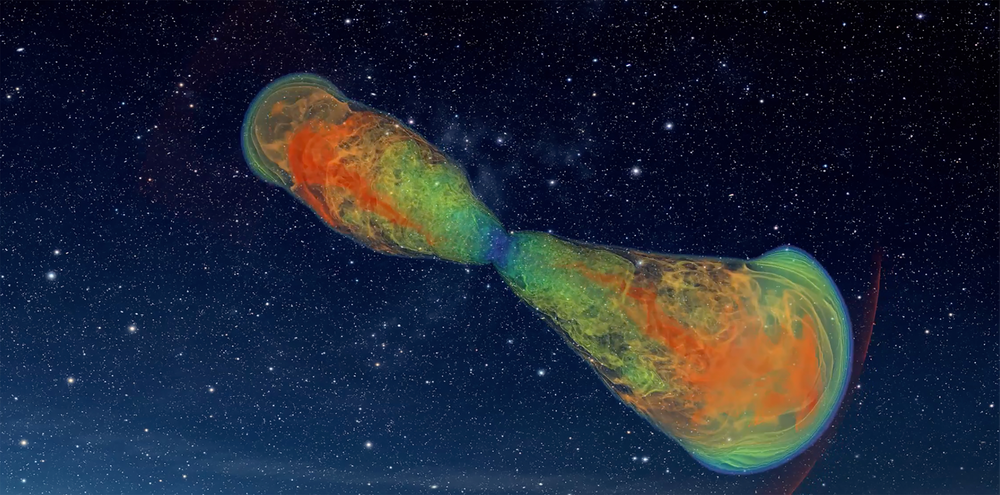Gravitational Waves from a Dying Star May Be Detectable
Over the past eight years, scientists have captured over 100 gravitational-wave signals coming from the smashing together of two massive cosmic objects, such as black holes or neutron stars. Yet, to date, no gravitational waves have been caught rippling from a single-object event, such as the explosion of a star. That lack of observation comes because, while two-object collisions produce strong gravitational waves with a clear frequency, single-object events produce weak signals at randomized frequencies. Now Ore Gottlieb of Northwestern University, Illinois, and colleagues have found a single-source dying star event that they predict could produce gravitational waves that are strong enough to detect in near-future runs of the various gravitational-wave observatories. Gottlieb presented the results at the recent meeting of the American Astronomical Society.
The explosive death of a massive star can birth a black hole that shoots out powerful jets of particles—called gamma-ray bursts. The jets are powered by the accretion of matter into the dark behemoth. Because of the intensity of such a supernova, Gottlieb and his team decided to simulate the death of a black-hole-producing star to see if any of the processes involved emitted potentially detectable gravitational waves. They found one. They noticed that as the jets collided with the exploded stellar matter, this matter transformed into a bubble of hot gas and debris that accelerated to surround the jet, disrupting spacetime and propagating gravitational waves.
The simulations show that this gas and debris “cocoon” is asymmetrical and highly energetic, both of which are required if strong gravitational waves are to be produced. The team calculated that the gravitational waves should have frequencies between 10 and 100 Hz, a range detectable by gravitational-wave observatories.
Gravitational waves flow through matter, so should researchers detect this predicted gravitational signal, it would allow scientists to look inside a system that is otherwise completely unobservable by telescopes, says Stan Woosley, a physicist at the University of California, Santa Cruz. He was not involved in the study. “It would just be totally exciting,” he says. Still, Woosley cautions that the predicted intensity of these waves is likely too small to be found by current detectors. Gottlieb agrees. As it stands, he thinks there’s a roughly 10% chance that gravitational waves from a turbulent jet cocoon will show up in the 2027 run of gravitational-wave experiments, which will have improved sensitivity.
If researchers do get lucky, a gravitational-wave detection of this type could help astronomers better understand the properties of newborn black holes, Gottlieb says. He also thinks that such a detection could help unravel still-existing mysteries of the behavior of black-hole-produced relativistic jets and of the explosion of massive stars. In the meantime, Gottlieb says that further simulations of black-hole-producing dying stars are needed so that the researchers can fully determine how explosion properties relate to observable characteristics. “This one simulation is clearly not enough to tell us anything interesting about the signal,” he says. “We will need many follow-up works [for that].”
–Allison Gasparini
Allison Gasparini is a freelance science writer based in Santa Cruz, CA.





